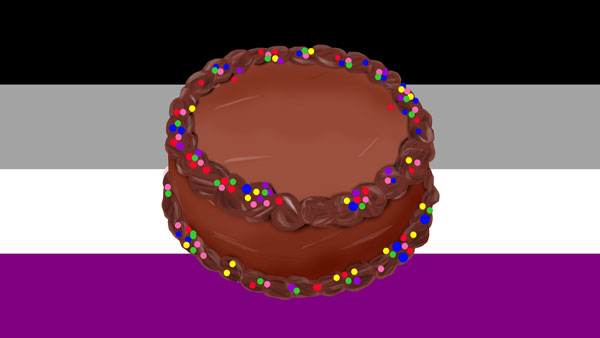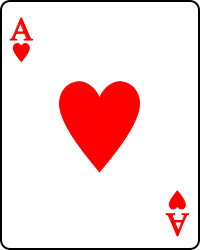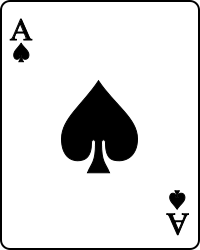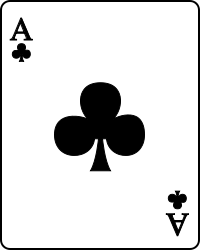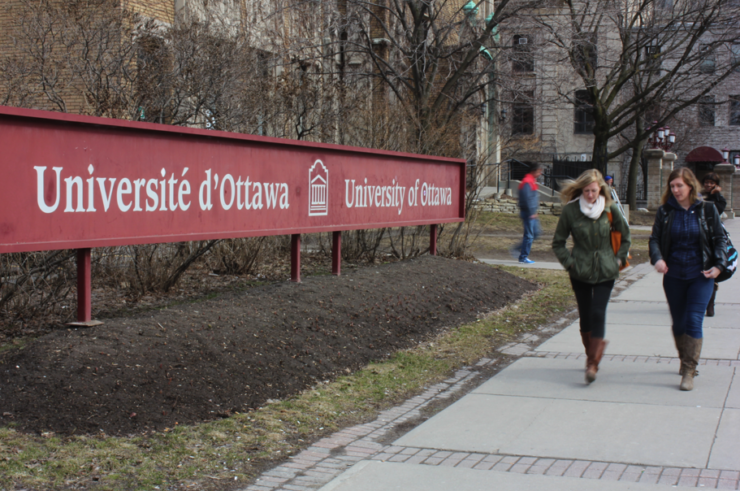U of O students talk about what it means to be asexual, and the challenges that come hand in hand with identifying with this misunderstood branch of human sexuality
Photo: CC, Anon Moos, Edits: Kim Wiens
When Melissa Salisbury, a former University of Ottawa English major, was in high school, the idea of having sex with her then boyfriend didn’t interest her in the slightest.
She didn’t know what it was, but she knew there was something different about her.
Meanwhile when Stephanie Meunier, a U of O women’s studies student, told her friends she had similarly apathetic feelings towards sex, she got a lot of confusing questions about it.
These kind of experiences are common for people who, like Salisbury and Meunier, identify as being asexual.
Aces High
In the simplest terms, asexuality describes someone who doesn’t experience sexual attraction.
According to a 2004 study conducted by Anthony Bogaert—a professor of human sexuality from Brock University—about one per cent of the population fits the definition of someone who “has never felt sexually attracted to anyone at all.”
When Salisbury was growing up, she had no idea that there were other people like her.
“I knew there was something different (about me) but no one could explain it to me because they didn’t know it existed,” she said. “I couldn’t go to my mom and say, ‘this is how I’m feeling’ and she could say, ‘that’s normal’.”
It wasn’t until her late teens when she did some research online and stumbled upon the term “asexuality”.
In all likelihood, Salisbury gleaned most of her info from sources like the Asexual Visibility and Education Network (AVEN), which is the largest asexual community in the world.
Founded in 2002 by fellow asexual David Jay, the website aims to “create public acceptance and discussion of asexuality and facilitate the growth of an asexual community.”
After its inception, the website grew quickly and it now includes approximately 119,000 members from over 150 countries. And it’s a good thing too, since there is a very limited amount of research available about asexuality. A lot of the current understanding surrounding asexual behaviour has been developed through this growing online community.
Not only do websites like AVEN act as great sources of information, but it also allows for asexuals (or “aces”, as they often call themselves) to develop their own sense of community and culture. For example, it was the AVEN forums that birthed the famous connection between asexuality and cake.
In the absence of any interest in sex, aces use images of cake to proclaim their admiration for certain things, since many in that community would agree that cake is a lot more enjoyable than intercourse. While this is mostly done in jest, Jay explains that this image has become the informal representation of the entire movement.
“Cake became this sort of symbol of welcoming and of acceptance and of ushering people into the community,” said Jay in the 2011 documentary film (A)sexual.
“That experience of finding other asexual people and finding a new way to talk about this stuff has really been something that has united the community and brought us together.”
The Illusion of the choice
Despite the growing size of the online community, Meunier notes that misconceptions about asexuality are widespread, with most of the confusion stemming from the fact that there’s not a “one size fits all” model for aces.
“You can talk to twenty different people and they’ll give you twenty different ways how they experience it,” she said.
According to Meunier, this is emblematic of human sexuality in general, which exists on a spectrum similar to a dimmer on a light switch.
“The dimmer is sexual attraction, how someone experiences sexuality.”
She goes on to explain that the brightest light is a high level of sexual attraction. The lower the light, the lower the strength of sexual attraction.
Asexuality is the light turned completely off.
However, Salisbury maintains that there is some fluidity with regards to aces and their personal relationships.
“There’s no true definition of asexuality. Some have no sexual relations, some get married and have children.”
Similar to other misunderstood sexual orientations like bisexuality, aces are often maligned by others for being immature, with many believing that their natural biological inclinations are, in fact, a lifestyle choice.
As such, asexuality is often confused with celibacy even though the two are not the same.
The difference has to do with the concepts of sexual attraction and sexual behavior.
Celibacy refers to the sexual behaviour of a person. Someone who is celibate makes a choice to abstain from sexual relations, despite experiencing genuine feelings of sexual attraction. Asexuality refers to the sexual attraction a person feels, or, in the case of most aces, a general lack of sexual attraction.
However, this does not necessarily mean they abstain from sex. Some people who are asexual do have sex.
Salisbury says that a lot of people mistreat asexuality as a romantic orientation. Some believe that people who are asexual cannot fall in love.
But according to Salisbury, that isn’t the case. Although they are often closely linked, sexual attraction and romantic attraction exist on two separate spectrums.
“Romance is a mental and emotional and sometimes intellectual attachment,” Salisbury explains. “A sexual (attraction) is just physical.”
Similar to how every person falls somewhere on the spectrum of sexual attraction, people fall differently on the spectrum of romantic attraction as well. This means that a person who is asexual might have romantic attractions. But then again, they also might not.
The term “aromantic” is used to describe people who do not experience any kind of romantic attraction.
Terms like “demi” and “gray” are used to identify asexuals who fall in between these two extremes.
In fact, there are many different combinations and permutations that exist on this spectrum. While such variety does fall in line with the world’s evolving attitudes towards sex and relationships, some are still reluctant to accept these new ideas wholeheartedly.
Another letter in the alphabet soup
Since aces can be subject to snide attitudes from the general public, you’d think that they’d be welcomed with open arms by groups who have been similarly misunderstood.
However, for some, it isn’t easy to determine how asexuality fits into the LGBTQ+ community.
As in every large community that spans different ages, sexes, cultures, and income brackets, there are those who aren’t very welcoming to people they perceive as being outsiders.
Because the asexuality movement is defined by not desiring sex, it sometimes clashes with the very sex-positive narrative that people often associate with the LGBTQ+ community.
“In our western society we place a lot of importance on sex,” said Meunier, “and it’s acceptable for a lot of people to have sex without any attachment.”
But when someone doesn’t want sex at all, it becomes difficult for people to swallow—both gay and straight alike.
Jay encounters this kind of attitude all the time in his advocacy work. While promoting asexual awareness on an episode of The View, he was abruptly cut off by co-host Star Jones who said that “If you’re not having sex, what’s there to talk about?”
In addition to these kinds of dismissive put downs, there is a lot of discussion about whether aces should be able to participate in public LGBTQ+ events, like marching in pride parades.
Dan Savage, an American gay activist and journalist, scoffed at the idea in the past.
“You’ve got the gays marching for the right to be homosexual and then you’ve got the asexuals marching for the right to do nothing. You didn’t need to march for that right. You just needed to stay at home.”
For those who are asexual and who identify as a member of the LGBTQ+ community based on who they are attracted to—like Meunier, who identifies as both asexual and queer—it’s much easier for them to fit into the existing community.
But as Meunier explains, it’s much more complicated for people who are straight and asexual, like Salisbury.
“You kind of fit in and you kind of don’t,” said Meunier. “There’s a history behind the word queer that doesn’t really fit with the asexual experience. It’s (about) who you have sex with.”
Quinn Blue, a coordinator for the Student Federation of the University of Ottawa (SFUO)-run Pride Centre, explains that their organization is welcoming of everyone.
“We are societally expected to have certain types of relationships and a lot of people fall outside of that and that’s where folks find community and solidarity with each other.”
While asexuality does fall outside of the average social expectations within sexual relationships, Blue admits that not everyone who is asexual identifies as a member of the LGBTQ+ community.
For Salisbury, she’s not as concerned about fitting into the LGBTQ+ community. For her, spreading knowledge that asexual behaviour isn’t something to be ashamed of should be the most prominent issue.
“Then kids growing up (who are asexual) aren’t alone.”
Keeping an open mind
Even though research surrounding this misunderstood branch of human sexuality is severely underdeveloped, there are still plenty of resources out there for rookie aces who are looking to find their place.
The SFUO Pride Center offers a variety of services to those in the LGBTQ+ community, including those who are asexual. U of O students can access services such as a drop-in space, peer support, a library, and different events.
Meunier, who has facilitated asexuality workshops at the U of O in the past, has noticed that there is a growing demand for this information on campus.
“People are excited and validated to find out (asexuality) is a thing,” she said.
There are community resources as well. Local organizations like Kind and the Youth Services Bureau offer discussion groups for those who are asexual.
In addition, there’s a lot of great information available online, with AVEN being the most well-known discussion board about asexuality.
Having said that, according to Meunier there’s still a lot of learning and listening that needs to happen concerning asexuality.
“Keep your mind open,” she said. “There are so many intersections of how you experience asexuality… we need to talk more about it and not take for granted that we know what it means.”
While this movement is subject to a lot of misinformation and dismissive attitudes, perhaps sexuals and asexuals can start to understand each other based on one universal belief: that cake is freaking amazing.
Asexual classifications according to AVENwiki
Ace of hearts-romantic asexuals
Ace of spades-aromantic asexuals (who don’t experience any romantic attraction)
Ace of diamonds-demisexuals and demiromantic asexuals (who only experience romantic or sexual attraction with those they share an emotional connection)
Ace of clubs-greyasexuals and greyromantic asexuals (whose chances of experiencing romantic/sexual attraction are dismal, but still possible)
Famous Aces

